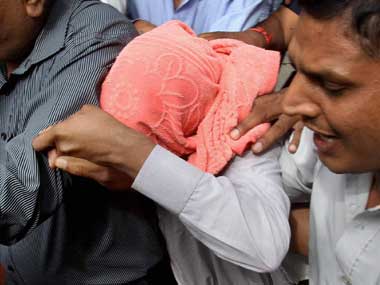He may be one of the reasons the government is seeking to amend the Juvenile Justice Act so that juveniles can be tried as adults, but according to a new report the juvenile sentenced for his involvement in the Delhi gangrape case now has now taken to painting and shows no “traces of anger”. The report comes at a time when the Union cabinet has already moved amendments to the Juvenile Justice Act, which empowers the Juvenile Justice Board to decide whether a juvenile above 16 years involved in heinous crimes such as rape is to be sent to a observation home or tried in a regular court as an adult. Under the current act, all juveniles can only be sent to a reform home for 3 years as maximum punishment. A large part of the Juvenile Justice reform debate was in fact triggered by the reports which claimed that the juvenile was the most brutal rapist in the case. However, contrary to popular opinion,
the Juvenile Justice Board while sentencing the boy, had said that there was no evidence to prove such claims and had said that the media had falsely called the boy as the most brutal. According to the report in the Washington Post by Rama Lakshmi, the boy may have managed to rebuild his life to some extent after being sentenced him to three years in a Delhi reform home. [caption id=“attachment_1076709” align=“alignleft” width=“380”] The Juvenile offender in the Delhi gangrape case in this file photo.PTI[/caption] The report points out that the teenager spends hours painting and while one of the paintings titled ‘The Princess’ shows a a young woman in a flowing robe, another shows a group of village women. The superintendent of the home is quoted as saying that the teen won a prize for one of his paintings and was anxious when he had to collect his prize, other officials said that he was smart and operated “with his head, not heart." His psychologist Shuchi Goel is quoted as saying that teenager has been doing his best to be more acceptable to others and is also learning English. However, the report also points out that even during the rehabilitation process, the boy hasn’t “admitted to the rape,” even during the official sessions and his psychologist says he could still be in denial about the incident.
The teenager had come to be known as 'Bhura' in the Indian media during the course of the the trial, (Bhura was a nickname given to him by his mother, according to an India Today profile of the boy). Bhura hails from a poor family in a small village in western Uttar Pradesh and was sent to Delhi by his parents to earn money. At the time of the trial, it was reported that
the juvenile was depressed and had even requested his welfare officers to help him meet his family members as he had not met them for five years. During the Juvenile Justice board hearings, both the media and the police had been insistent that the Juvenile Justice Act needed reforms, because in everyone’s eyes ‘Bhura’ was the worst perpetrator. The possibility of his reform was not considered by many. But as Washington Post story indicates the juvenile has shown that if given a chance, reform may be possible in the current system.
The juvenile convict in the Delhi gangrape case has taken to painting and shows no “traces of anger”, according to a report.
Advertisement
End of Article


)
)
)
)
)
)
)
)
)



